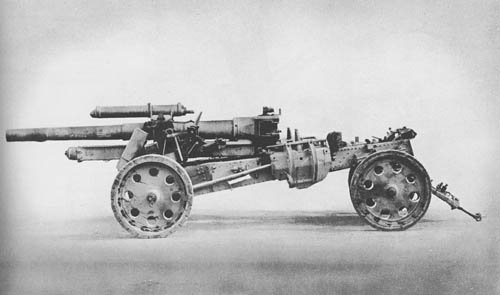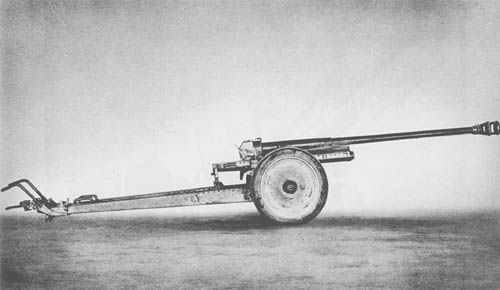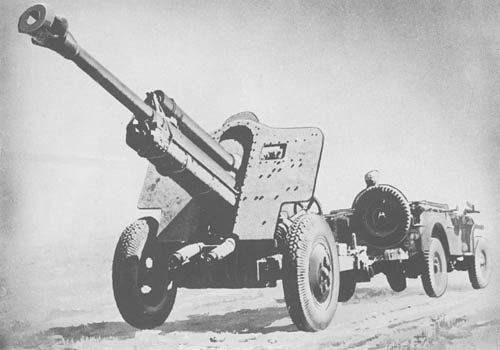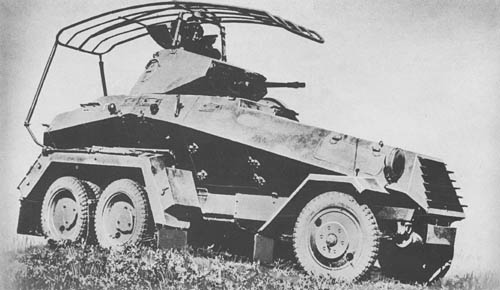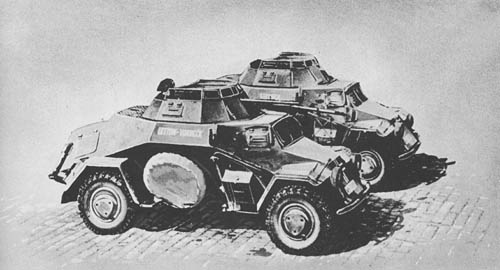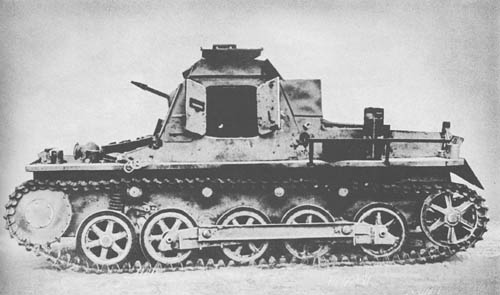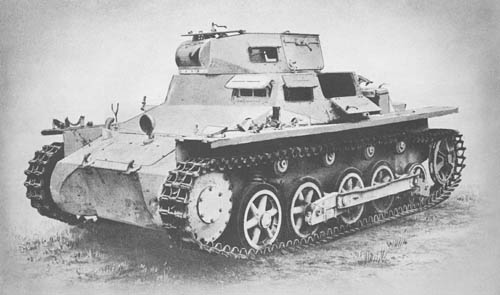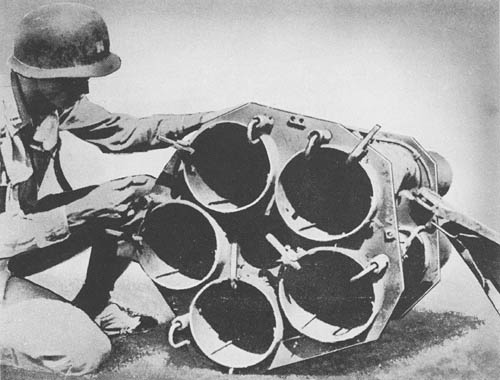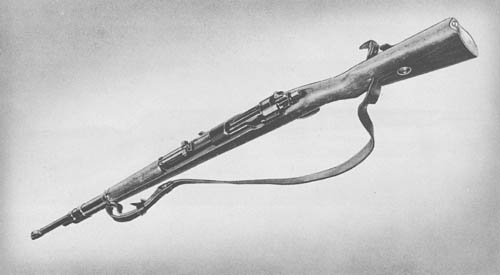
This is the standard shoulder weapon of the German Army and is very similar to the M1903 rifle used in the American Army. Known as the Mauser Kar. 98K, it may be regarded as a carbine or a short rifle.
This rifle has no windage adjustment or peep sight but gives good results at medium range. It is a bolt-operated, magazine-fed shoulder weapon.
Older models of this weapon, which operate in the same fashion, differ only in having longer barrels and in minor variations in fittings. They are known as the Gewehr 98, Kar. 98, and Kar. 98B.
The safety is a thumb-operated lever mounted on the bolt plug, operating in the same manner as the safety on the U.S. Rifle, M1903 (Springfield). The rifle is also loaded in the same manner as the M1903 rifle—the empty clip being ejected as the bolt is closed. Double-pull trigger action is also similar. A short knife bayonet is made for this rifle and several types of rifle grenade launchers may be attached. At least two different types of telescopic sights are found when this rifle is used for sniping. One is the ZF39, a conventional Zeiss 4X sight attached to mounts which are fitted to the receiver ring and bridge. The other, the ZF41, is a short 1 1/2 x scope with long eye-relief of 16 3/4 in. which is attached to the rifle by a side mount which is attached to the left side of the rear sight base.
SPECIFICATIONS
| Caliber | 7.92 mm (.312 in.) | |
| Weight (approx.) | 9 lb. | |
| Overall length | 43.5 ins. | |
| Length of barrel | 23.4 ins. | |
| Principle of operation | Manually operated bolt action | |
| Capacity of magazine | 5 rds. | |
| Sights | ||
| Front | Inverted V blade (which is sometimes equipped with a hood) | |
| Rear | Leaf with open V notch sliding on ramp, graduated from 100 to 2,000 meters. | |
| Telescopic | See Text | |
| Muzzle velocity | 2,600-2,700 f/s | |
| Range | ||
| Maximum (approx.) | 2,500 to 3,000 yds. | |
| Effective (approx.) | 600 to 800 yds. | |
| Ammunition | 7.92 mm German Mauser ground types |
German: p. 207
